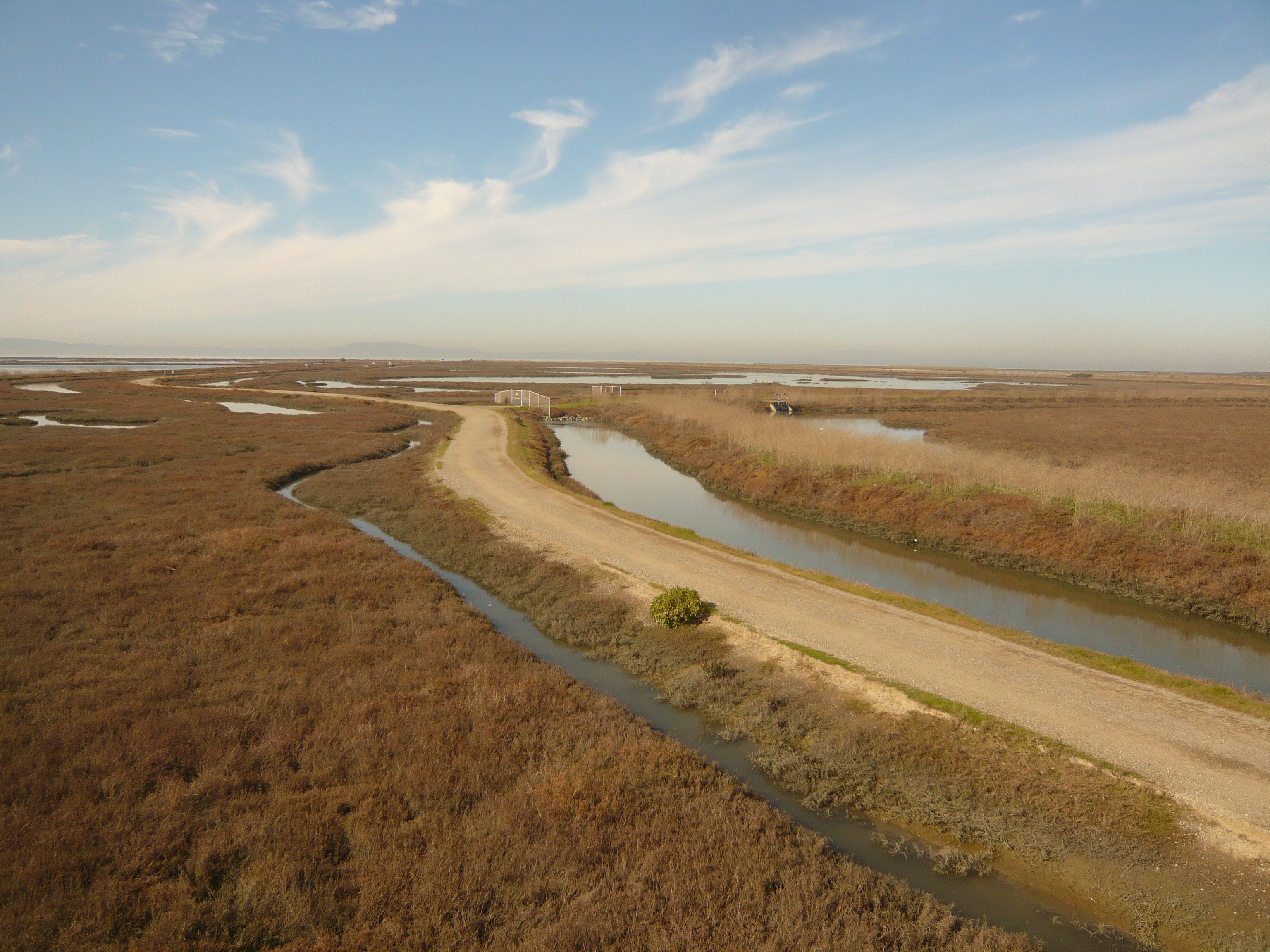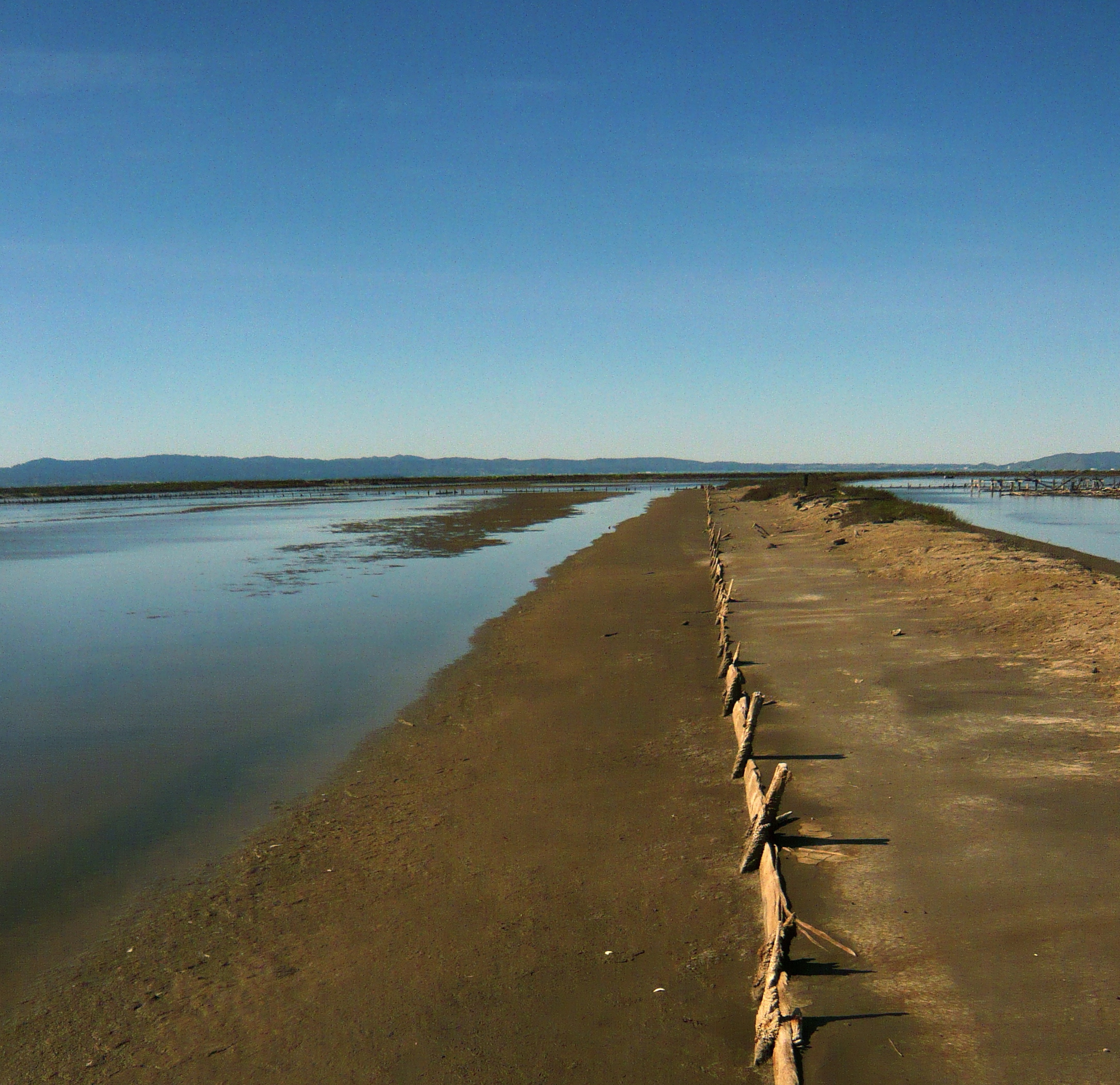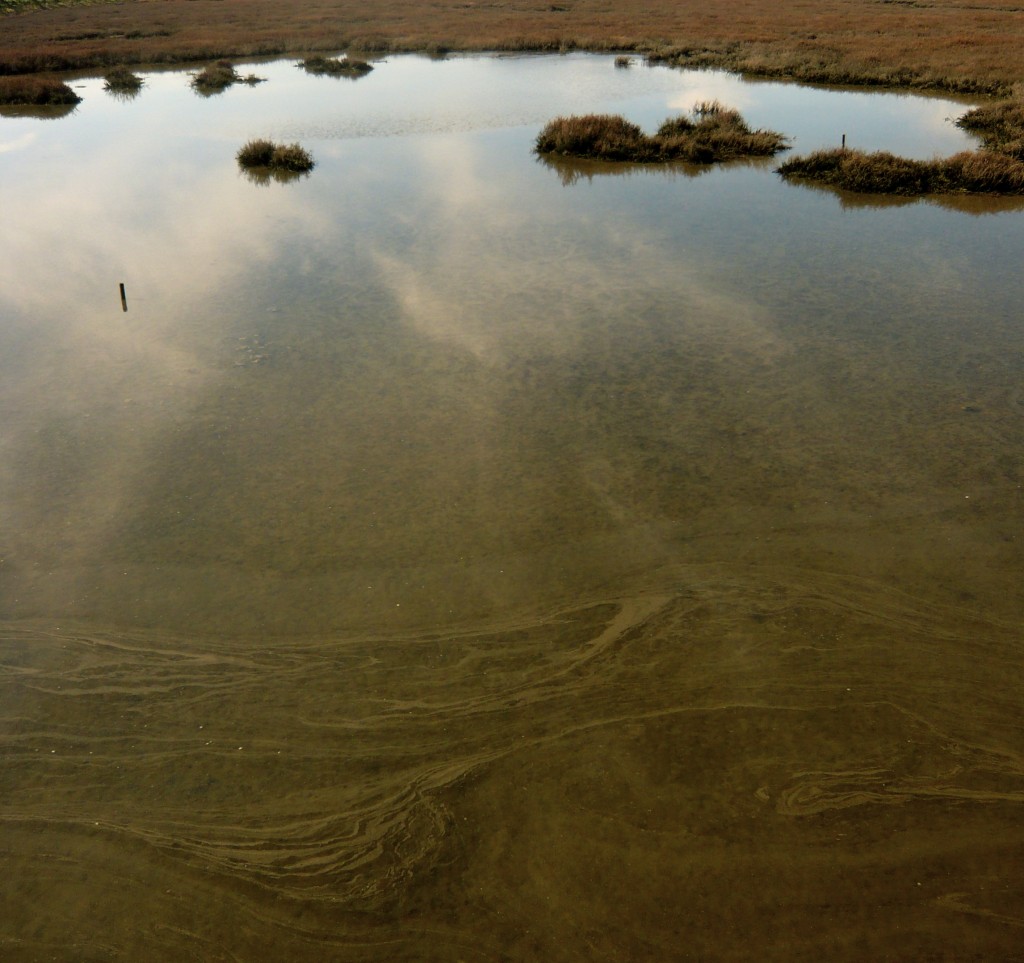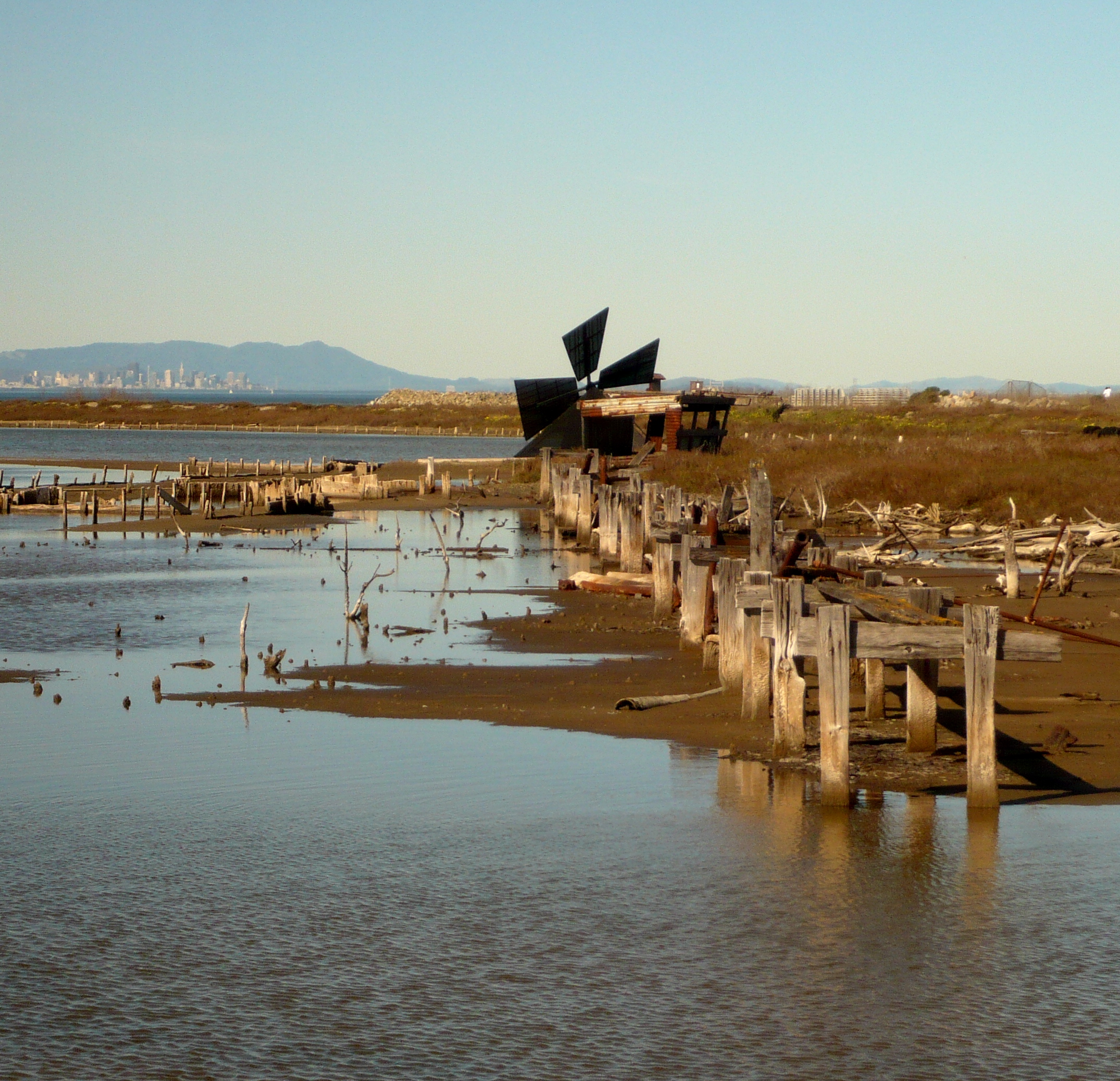deTourist.org every city tells a story……..
Flat and Fast: Hayward Salt Flats
I prefer the window seat when I fly: to snuggle up to the warmth of the window sun, to have room enough to stretch out without my legs being caught by the beverage cart and time enough to stare out the window and watch the patterns of the landscape pass by. Flying into SFO, I couldn’t help but notice the large geometric fields of brightly colored water. What is that? I got curious.
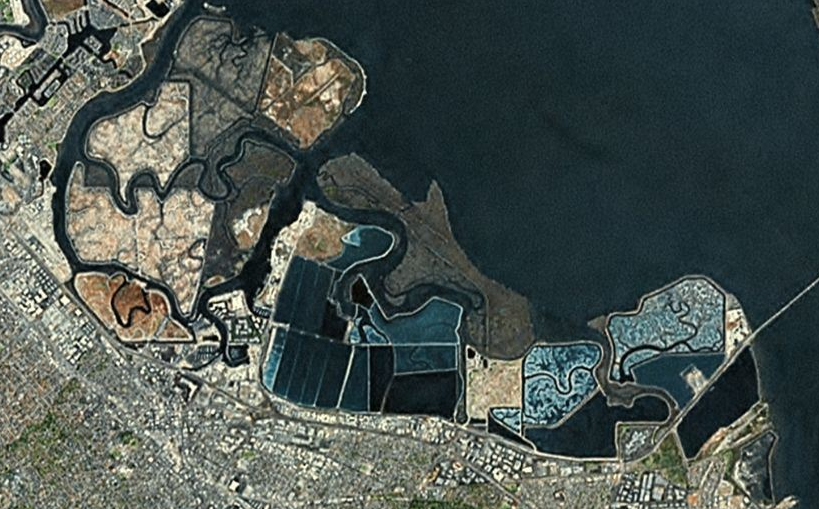 “That” is a series of salt evaporation ponds that make up the Cargill Salt Flats, last vestige of a once domineering salt production industry of San Francisco. Who knew?
“That” is a series of salt evaporation ponds that make up the Cargill Salt Flats, last vestige of a once domineering salt production industry of San Francisco. Who knew?
The San Francisco Bay is uniquely well suited to the creation of salt and starting with the Ohlone Indians, the marshes along the bay have been cultivated for salt harvesting. This process was further exploited by the Spaniards, then the pioneers, and eventually evolved into a bustling industry at the turn of the century but by 1974, the profit margin had been reduced to such an extent that much of the land was sold bit by bit to the state as park land. This provided a unique opportunity for acres of evaporation ponds to be returned to the bay as marshlands, happily for us because now we can run in them.
Starting at the Hayward Shoreline Interpretive Center, you can follow the Hayward Shoreline Trail along the bay for an impressive 7.5 miles out and back, making it a 15 mile loop which should be plenty for most days. Vestiges of the wooden fences between the salt ponds stand upright in the muck, the only historical testimony to this once thriving industry. Three little sticks protrude the surface of the waters as our delightful tour guide proudly indicates these last remains of the former loading dock for ships heading to San Francisco for distribution.
